Northern Bobwhite
Colinus virginianus
Status: Secure
The Northern Bobwhite is a small bird, in the quail family, that typically lives on the ground in open forests. The longleaf pine forest is an important habitat for this species of bird because it has lots of open space for the northern bobwhite to run, nest, and feed, but it also has good places to hide. These birds have round bodies, small heads, and you can tell by their shape that they are adapted more to running than flying. They have a brown, black, tan, and white patterns across their feathers, which help them blend in or camouflage with their surroundings. Quail are popular birds to hunt.
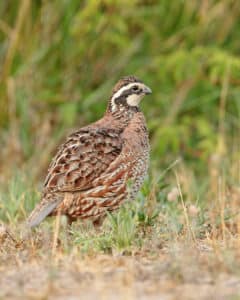
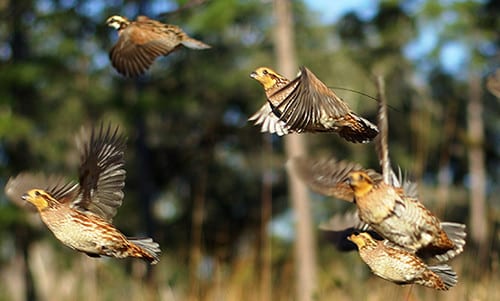
Habitat & Range
Northern bobwhites can be found in much of North America, extending south into Central America. Across the southeastern United States, the longleaf pine ecosystem is an important habitat for this bird species. Northern bobwhite depend on open forest habitat with lots of bunch grasses and places to hide and eat on the ground. So the regular fires in the longleaf forest maintain an ideal habitat.
Food Web & Energy Flow
The northern bobwhite eats primarily small ground insects and grubs, seeds, and small plants growing on the forest floor. In that sense, they are secondary consumers. They are also prey for larger birds of prey such as hawks and eagles, and mammals such as fox and skunks.
Relationship to Fire
The northern bobwhite depends on an open forest floor to run through, with lots of bunch grasses and other debris to hide in, and small plants and insects to eat. Regular, low-intensity fires create and maintain this ideal habitat for northern bobwhites in the longleaf pine forests.
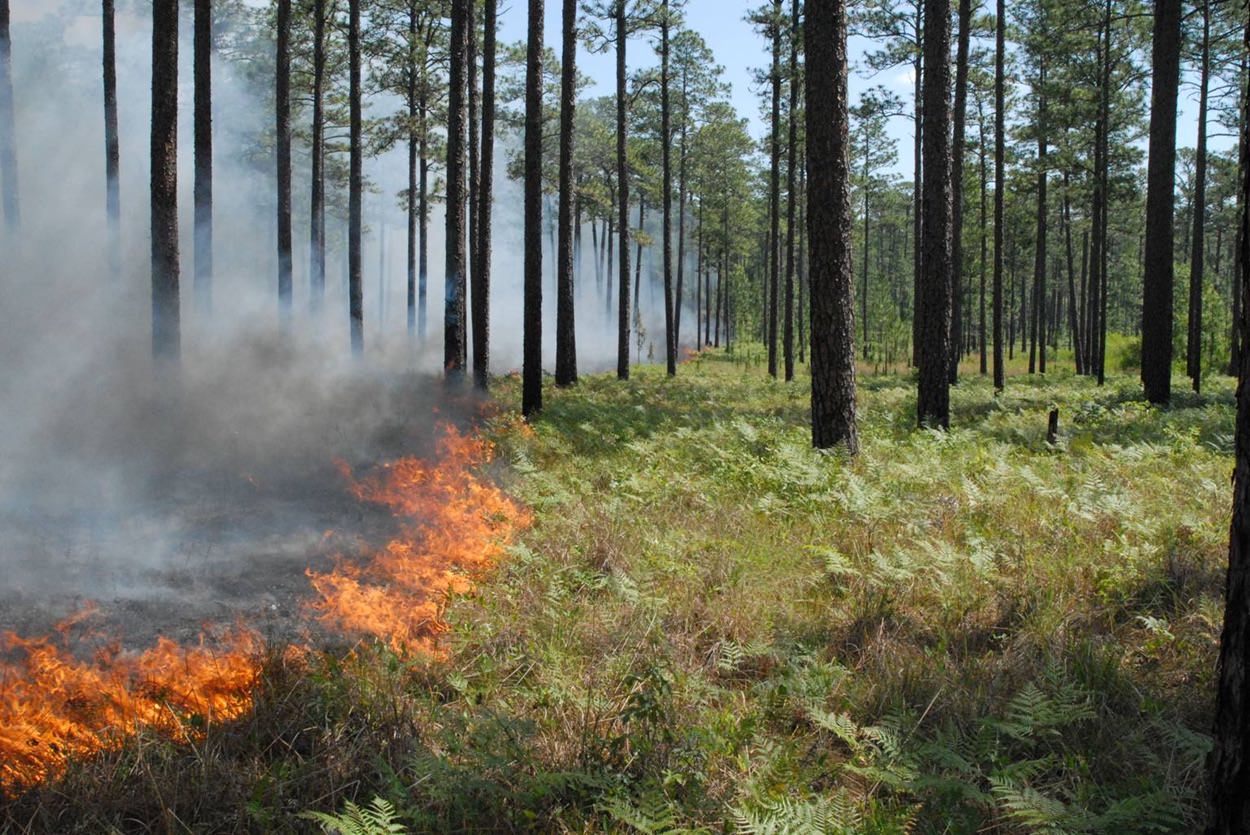
Conservation Status
The northern bobwhite is "Apparently Secure" meaning there is pretty low risk that the species will go extinct. However, as you can see from the map, there are places across the range of the northern bobwhite where it is in more danger of going extinct locally.
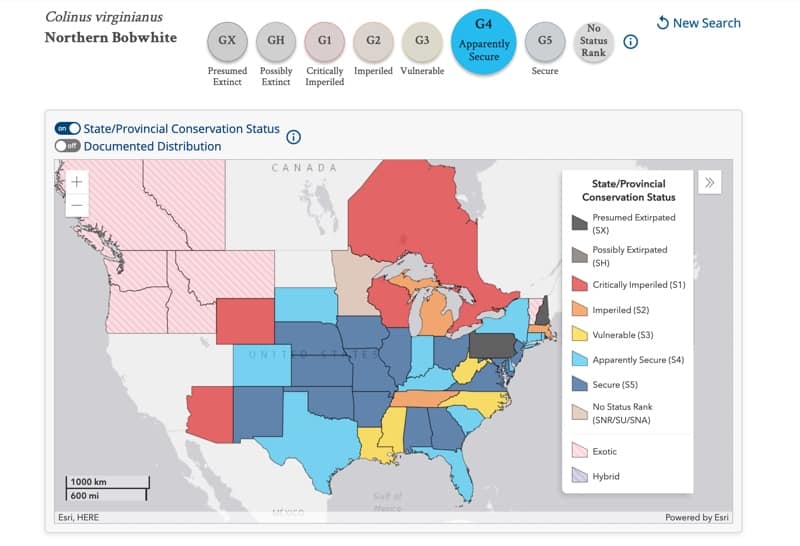
Human Impacts/ Threats
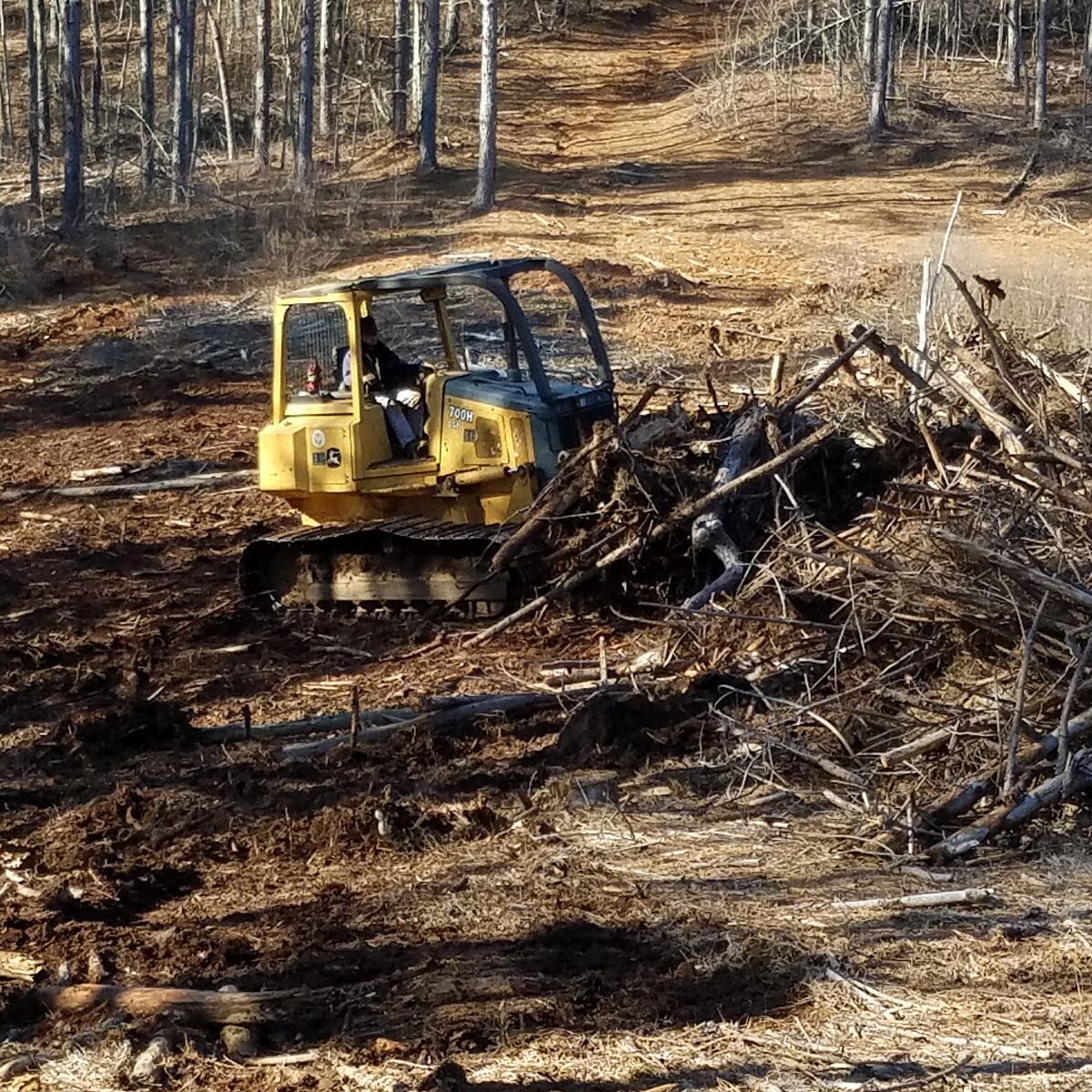
Land Use Conversion
Longleaf forests and the habitat it supports is being cleared or converted to use the land for other uses like houses, roads, agriculture, and even to grow different types of trees to sell.
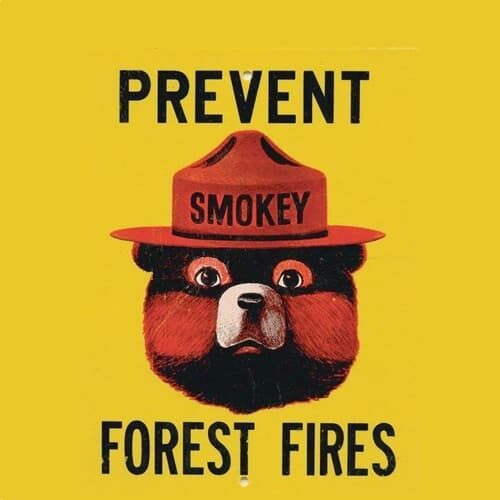
Fire Suppression
Many people think of fires in the forest as bad, so they work hard to prevent or suppress them. But longleaf forests NEED regular fire to support habitat for the species that live there!
